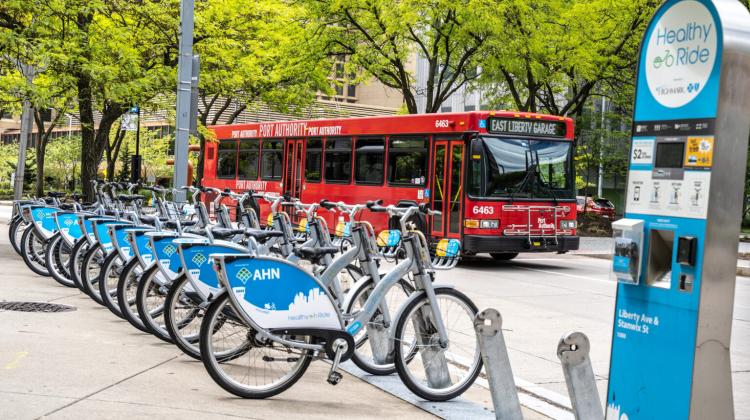Emerging Mobilities Impact on Housing and Access to Opportunities

Credit: Better Bike Share Partnership
When one imagines how an urban planner engages with mobility, we often conjure images of folks hovering over models of mobility infrastructure (e.g. roads, bridges, sidewalks, and bike lanes) or laboring on drawings optimizing the blending of development and public transit systems. Emerging mobility services, such as communal shuttle services or bike shares, represent a plastic and rapid intervention into a mobility ecosystem to improve access to opportunities and shift people away from owning and using automobiles. However, there is a gap in the literature examining how emerging mobility services can change neighborhoods and communities - specifically if they are accelerators of displacement and gentrification, or if they offer opportunities to improve non-auto accessibility within auto-dependent spaces.
In his dissertation, Rounaq Basu (PhD ‘22, MCP ‘19, MST ‘19), explores novel conceptual, policy, and methodological avenues to better measure, understand, and assess the distribution of benefits of emerging mobilities in the context of the neighborhoods where they are located.
“For the vast majority of our lives, the mobility ecosystem has been fairly constant when it comes to modalities. Private cars and public transit, often coupled with informal transit or paratransit in some contexts, have dominated the discussion, with scant attention to walking and biking. Over the last 15 years or so, we have witnessed a reimagining of what mobility can look like. Emerging mobility services, such as ride hailing, bike sharing, and e-scooters, have broken the monotony of having to choose between private cars and public transit,” said Basu. “Not only are these service modes in their own right, they can also improve first/last-mile connections to public transit. This sort of dual relationship, where they can both complement and compete with traditional modes, results in new and interesting questions for urban planners. Will these services offer a viable alternative to private vehicles and shift people away from using cars? Or will they instead eat into the already fragile post-pandemic transit ridership?”
“While these questions are important to understand the mobility market effects of emerging mobilities, the housing market effects are rarely considered. We know from our lived experiences that transit improvements, such as extensions to an existing line or the construction of a new line, often tend to cause gentrification. Given that emerging mobility services can potentially improve non-auto accessibility similar to transit, will they change neighborhoods in the same manner? And, if so, what can we as planners do to mitigate undesirable consequences? These were the questions that motivated my dissertation research. Through the generation of multiple what-if scenarios using a land use-transportation interaction (LUTI) model, I found concerning trends of lower-income neighborhoods being more susceptible to gentrification when emerging mobilities were piloted in an unregulated manner. However, when I introduced housing and mobility regulations (e.g., upzoning with affordability constraints and upzoning with parking restrictions), the results demonstrated a more equitable distribution of non-auto accessibility improvements while also nudging mobility choices in a more sustainable direction by reducing private vehicle ownership. My dissertation highlights the need to consider both the mobility and housing effects of emerging mobilities when we try to contemplate how they might change our communities.”
Basu’s dissertation, “Planning Sustainable Cities: Coordinating accessibility improvements with housing policies,” won the 2023 departmental award for outstanding dissertation.


